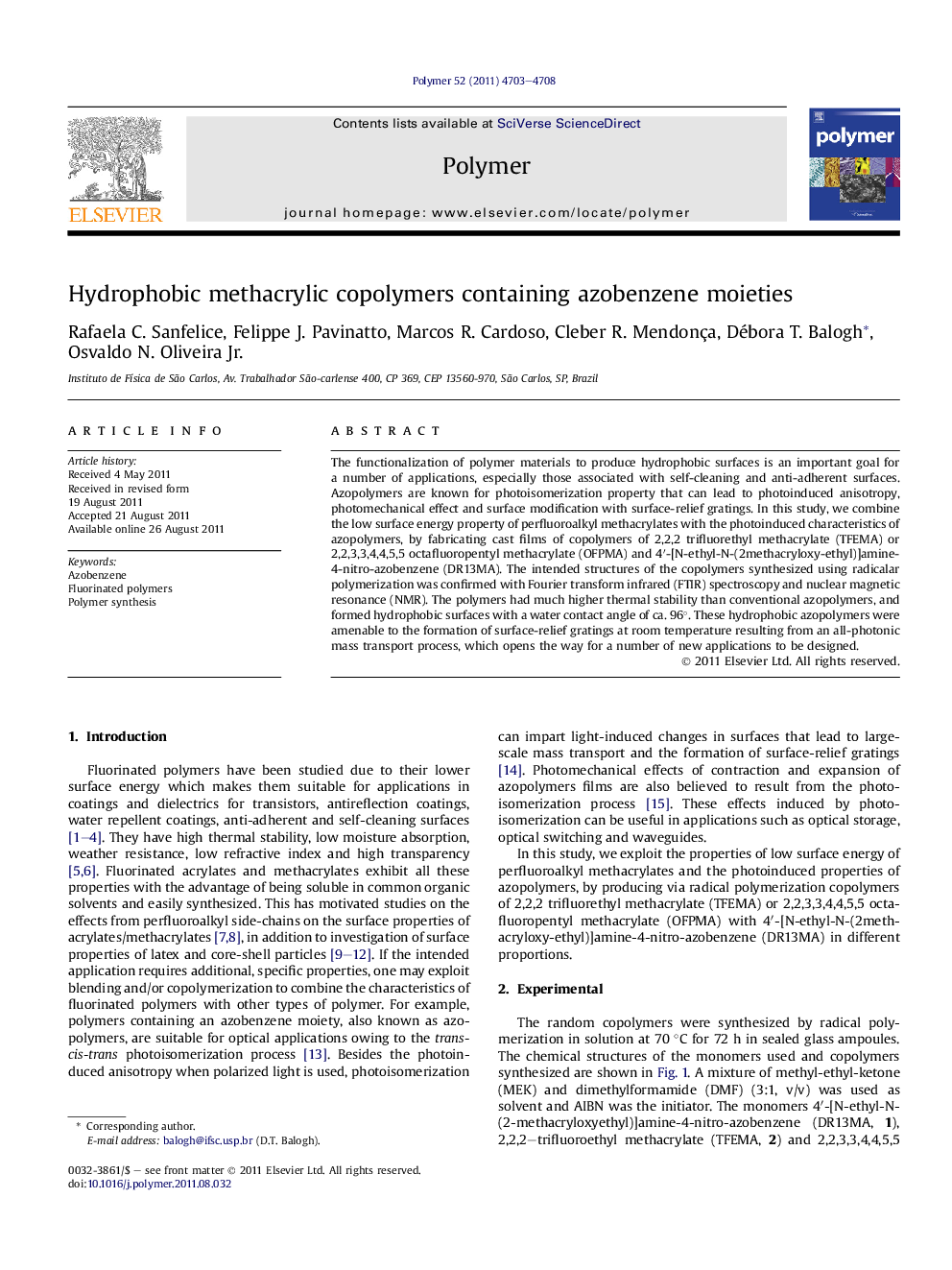| Article ID | Journal | Published Year | Pages | File Type |
|---|---|---|---|---|
| 5184172 | Polymer | 2011 | 6 Pages |
The functionalization of polymer materials to produce hydrophobic surfaces is an important goal for a number of applications, especially those associated with self-cleaning and anti-adherent surfaces. Azopolymers are known for photoisomerization property that can lead to photoinduced anisotropy, photomechanical effect and surface modification with surface-relief gratings. In this study, we combine the low surface energy property of perfluoroalkyl methacrylates with the photoinduced characteristics of azopolymers, by fabricating cast films of copolymers of 2,2,2 trifluorethyl methacrylate (TFEMA) or 2,2,3,3,4,4,5,5 octafluoropentyl methacrylate (OFPMA) and 4â²-[N-ethyl-N-(2methacryloxy-ethyl)]amine-4-nitro-azobenzene (DR13MA). The intended structures of the copolymers synthesized using radicalar polymerization was confirmed with Fourier transform infrared (FTIR) spectroscopy and nuclear magnetic resonance (NMR). The polymers had much higher thermal stability than conventional azopolymers, and formed hydrophobic surfaces with a water contact angle of ca. 96°. These hydrophobic azopolymers were amenable to the formation of surface-relief gratings at room temperature resulting from an all-photonic mass transport process, which opens the way for a number of new applications to be designed.
Graphical abstractDownload full-size image
